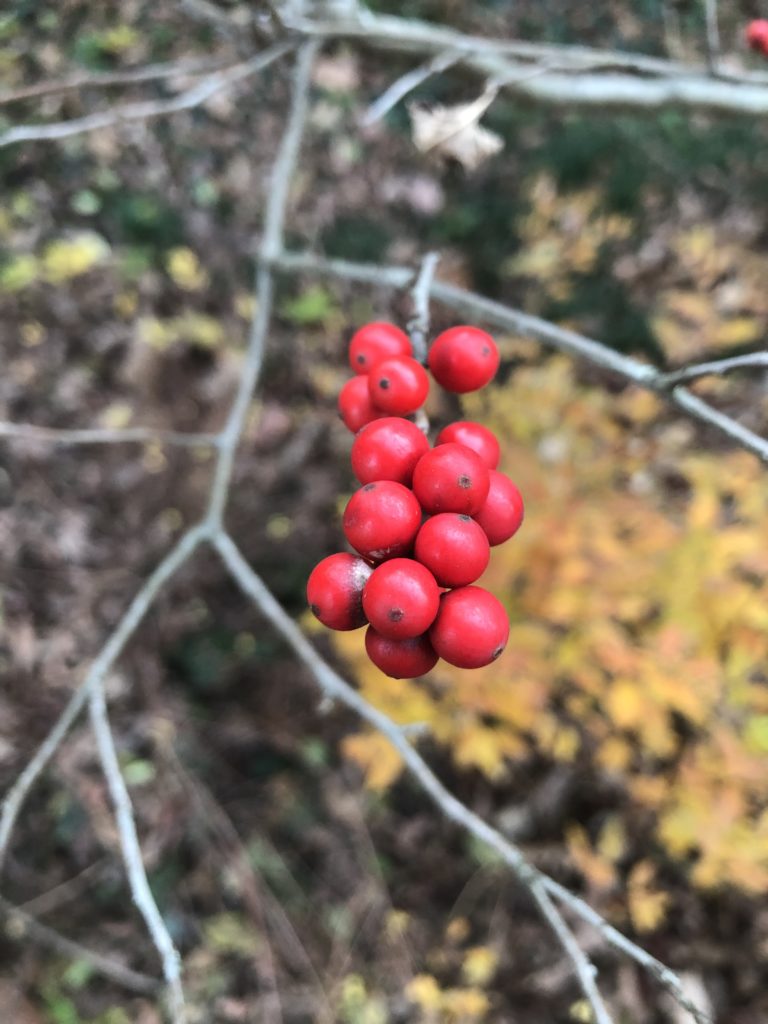
Winterberry Holly
January 11, 2021
Winterberry holly (Ilex verticillata) and deciduous holly or possumhaw (Ilex decidua) are both shrub holly species that are deciduous (drop their leaves in the winter). Their fruit are ripe now and they will retain the fruit through the winter until birds and small mammals eat them.
Winterberry occurs throughout Virginia and the eastern United States from Maine to north Florida to Louisiana and Minnesota. Deciduous holly occurs in the Piedmont and Coastal Plain of Virginia and throughout the southeastern United States except for the mountains. Both species usually occur on poorly-drained soil.
Winterberry is 5 to 15 feet tall and has elliptical-shaped leaved arranged alternately and doubly and coarsely toothed. They are 1.5 to 4 inches long. The flowers are small and white. The fruit is a round red berry ¼ inch in diameter. The fruit persists into the winter.
Deciduous holly is up to 30 feet tall and has elliptical-shaped leaves arranged alternately and finely toothed or have rounded teeth. They are 2 to 3 inches long. The flowers are small and white. The fruit is a round red berry ¼ inch in diameter. The fruit persists into the winter.
Both species have a dense branching habit that provides excellent songbird nesting habitat and makes dense hedgerows under which quail and rabbits can find shelter. Both species are excellent plants for pollinator habitat. Both species are available commercially as bare-root seedlings.
Content and photos by Bob Glennon, NRCS

winterberry holly blooms 
winterberry holly berries